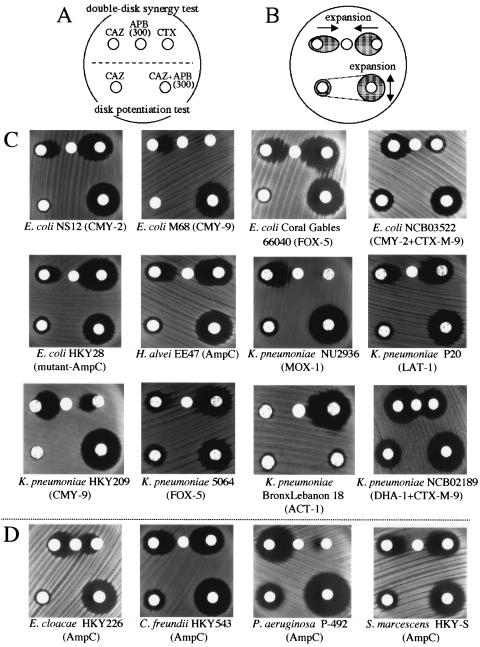FIG. 1.
DDST and disk potentiation test for class C β-lactamase producers. (A) Scheme of disk arrangement for the two tests. The upper three disks are for DDST, and the lower two are for the disk potentiation test. The amount of APB added to the disk was 300 μg. (B) Typical observations of the growth-inhibitory zones among class C β-lactamase producers. The growth-inhibitory zones are expanded toward the APB disk in DDST. In the disk potentiating test, the diameter of the growth-inhibitory zone is expanded around the disk containing both CAZ and APB compared with that around the disk containing solely CAZ. (C) Practical changes in the morphologies or the diameters of the growth-inhibitory zones among the class C β-lactamase-producing strains. Expansion of the growth-inhibitory zone toward the APB disk is observed around the disks containing CAZ or CTX in DDST (upper) among the class C β-lactamase producers. In the disk potentiation test (lower), enlargement of the diameter of the growth-inhibitory zone of greater than or equal to 5 mm is seen among all class C β-lactamase producers except K. pneumoniae BronxLebanon 18. (D) DDST and disk potentiation test against chromosomal AmpC producers. Similar findings are observed among gram-negative rods that produce chromosomally encoded inducible AmpC type β-lactamases, suggesting that the new identification method described in the present study can also be applied to chromosomal AmpC producers, as well as plasmid-mediated class C β-lactamase producers.

